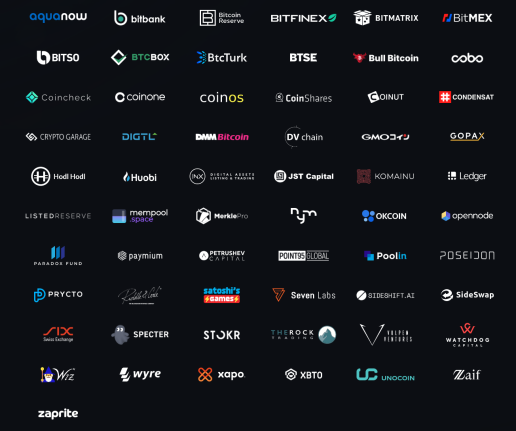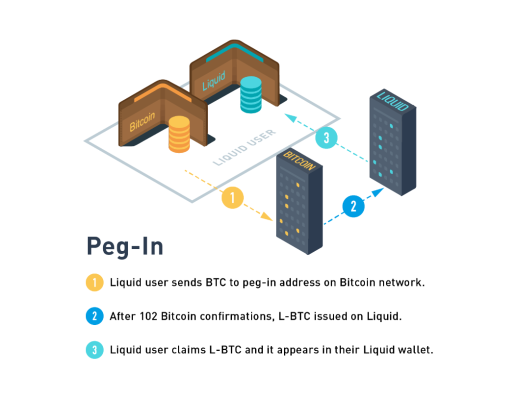Disclaimer: Content about scaling solutions and projects is not an endorsement. All content is solely for educational purposes.
Since its inception in 2009, Bitcoin’s scalability has been a concern for both retail investors and financial institutions. A major challenge these traders, exchanges, brokers, and market makers face with Bitcoin is the network’s limited throughput.
In most cases, Bitcoin transactions can take upwards of 1 to 1.5 hours to reach finality on the blockchain. Slow block times pose significant challenges for many crypto traders attempting to make time-sensitive transactions of Bitcoin. For instance, arbitrage traders can face massive margin risk when transactions are not instant.
Another complicating factor for Bitcoin traders is the publicity of transactional details. Anyone can view the volume of transactions and account balances on Bitcoin. This puts enterprise users making large transactions at risk of front-running and can also generate privacy concerns.
Bitcoin has emerged as the optimal digital asset for institutions to hold. However, its sluggishness and publicity still cause many inconveniences when transacting in large amounts on the blockchain.
To address these shortcomings of Bitcoin, the Liquid Network was created.
What is Liquid Network?
Launched by Blocksteream in 2018, Liquid Network is a layer-2 sidechain that improves the performance and functionality of Bitcoin. With Liquid, users can complete fast, secure, and confidential transactions on the Bitcoin blockchain.
Liquid is another Bitcoin layer that builds technologies and applications on top of Bitcoin rather than altering its base. Additionally, Liquid operates independent of Bitcoin and has its own global ledger and consensus mechanism.
An important part of Liquid is its solutions for Bitcoin DeFi. By sending BTC to Liquid, retail and institutional investors can use decentralized finance services backed by the Bitcoin blockchain. This includes infrastructure such as security tokens, trustless swaps, private P2P payments, and more.
What is the Liquid Federation?
Instead of using an expensive proof-of-work consensus mechanism, Liquid created the Liquid Federation to serve as the creators of new blocks.
The Liquid Federation is a group of crypto-native organizations, including exchanges, trading desks, and developers, that perform vital tasks for the protocol. Of the approximately 60 members, 15 act as functionaries for 1) confirming new blocks and 2) securing and managing Bitcoin funds held in the network’s multi-signature wallet.
The Federation also votes on board representatives who lead decision-making regarding Liquid’s maintenance and operation.

Source: liquid.net
How Does Liquid Network Work?
Sidechains such as the Liquid Network allow users to transfer BTC to and from the Bitcoin mainchain via a two-way, 1:1 peg. Liquid issues its own native asset, Liquid Bitcoin (L-BTC), which is a “wrapped” version of BTC. L-BTC is always created and burned by an equal amount of BTC locked on the mainchain by the Liquid governance.
Peg-Ins for Liquid Bitcoin
To transfer BTC to the Liquid blockchain, users must initiate a “peg-in.” This process is completed by sending BTC to a Bitcoin address managed by the Liquid Federation. The Federation will then send out an equivalent amount L-BTC in return for BTC. Once a user has L-BTC, they can easily interact with the Liquid chain and its ecosystem.

Source: blockstream.com
While users can manually initiate a peg-in, there are more convenient means for obtaining L-BTC, including centralized exchanges, OTCs, and swap platforms.
Peg-outs for Bitcoin
When a user wants to swap their L-BTC back to BTC on the Bitcoin network, they can do so by initiating a “peg-out.” To start the process, the L-BTC must first be sent to a burn address, where the funds will be permanently removed from the Liquid Network. Once this transaction is confirmed, the Liquid Federation will release an equivalent amount of BTC on the Bitcoin network and send it back to the user.

Source: blockstream.com
Only Liquid Federation members have the ability to perform a peg-out, but users can also use Bitcoin exchanges or peer-to-peer swaps to convert L-BTC to BTC.
How Does Liquid Network Improve Bitcoin?
The Liquid Network layer adds 3 key features to Bitcoin:
Higher transaction throughput
With just a 60-second block time and two-block finality, the Liquid Network can confirm transactions within 2 minutes. This is significantly faster than Bitcoin, which adds a new block approximately every 10 minutes. Liquid’s exponential speeds are extremely valuable, especially for traders making time-sensitive transactions.
Asset issuance
Any user can issue new tokens on the Liquid sidechain - something not possible on the Bitcoin mainchain layer due to its limited programmability. These tokens can represent various digital assets including stablecoins, securities, utility tokens, and non-fungible tokens. With the Liquid Swap tool, users can trade any two Liquid assets (including Liquid Bitcoin, L-BTC and Liquid-based Tether, USDT).
The Liquid sidechain also has atomic swaps, allowing peer-to-peer exchanges across Bitcoin and Liquid without an intermediary.
Confidential transactions

Source: blockstream.com
Bitcoin transactions on Liquid have native confidentiality since the asset type and amount of tokens are hidden from the public ledger. Only active participants (and designated parties) can see the sensitive details of the transaction. Liquid’s privacy keeps users’ financial data secure and out of view from any malicious third parties.
Wallets on Liquid Network
If you hold L-BTC or other Liquid assets, there are a few compatible non-custodial wallets to choose from:
- AQUA - A beginner mobile wallet available on iOS that supports Bitcoin and Liquid Network assets.
- Blockstream Green - A Bitcoin and Liquid wallet with advanced features, including hardware support, Tor support, and multisig. Green is available on iOS, Android, MacOS, Windows, and Linux.
- Blockstream Jade - A Bitcoin and Liquid hardware wallet that provides offline security and compatibility with Blockstream Green.
Projects Using Liquid Network
Currently, the Liquid Network has two leading platforms for DeFi activities; Hodl Hodl and SideSwap.
Hodl Hodl
Hodl Hodl is a peer-to-peer Bitcoin trading application that utilizes multisig escrow smart contracts instead of traditional custodian methods. Hodl Hodl was one of the first platforms to incorporate Liquid features, letting users conveniently swap BTC in and out of Liquid.
With Lend at Hodl Hodl, users can also lend out L-BTC and Liquid USDT. As a more convenient on-ramp for Bitcoin lending, users benefit from Liquid Network’s improved privacy measures, faster transaction times, and lower transaction fees on trading activities.
SideSwap
SideSwap is an application that allows users to send, receive and swap Liquid tokens seamlessly. Exchanging digital assets can be done through SideSwap atomic swaps, which enable peer-to-peer trading and eliminates any counterparty risk.
Atomic swaps on Liquid are designed for users to remain in control of their assets during the entire trading process. Through the SideSwap self-custodial wallet, users hold the keys to all their Liquid assets. SideSwap also provides convenient means of onboarding to Liquid through swaps between BTC and L-BTC.
The SideSwap application is user-friendly and available for download on most mobile and desktop platforms.
Liquid Network: A Bitcoin Layer for Privacy and Issuance
The Liquid sidechain improves Bitcoin DeFi in several ways. Liquid leverages fast transaction finality and industry-leading privacy, making Bitcoin significantly more practical for its trading user base.
Liquid’s support for multiple assets adds novel use cases that cannot be created on the Bitcoin mainchain, such as stablecoins and NFTs.
Liquid’s governance plays a vital role in the sidechain - signing transactions, generating new blocks, and securing the network’s BTC funds.
Self-custody of Liquid assets is simple with wallets like AQUA, Jade, and Green. For users looking to exchange their Liquid assets, platforms like Hodl Hodl and SideSwap are ideal for trading.
As a Bitcoin layer, the Liquid Network brings greater scalability, interoperability, and programmability to the growing Bitcoin ecosystem.

